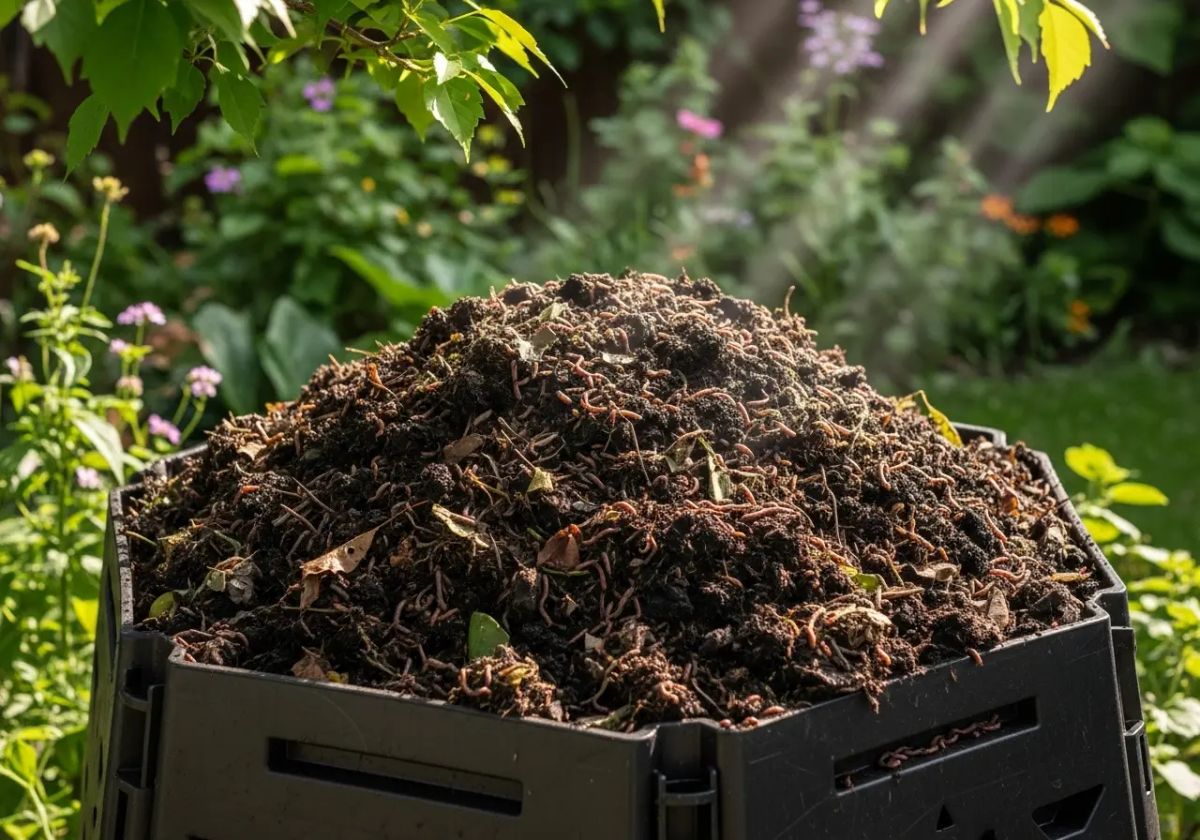Compost is just decomposed organic material. You can make it at home for free. It is the best thing you can add to your garden soil.
Making compost turns your kitchen scraps and yard waste into a valuable resource. With household food waste being a major concern, composting at home continues to be a popular sustainability practice in 2025. This guide shows you how to do it.
Why You Should Make Compost
Compost does one simple thing: it improves your soil. This is how it works.
- It adds nutrients. It acts as a slow-release organic fertilizer for your plants.
- It improves soil structure. It makes heavy clay soil drain better. It helps sandy soil hold water.
- It reduces waste. You send less food and yard waste to the landfill.
The Two Ingredients: Greens and Browns
A compost pile needs a mix of two types of materials to work correctly. People call them greens and browns.
"Browns" Provide Carbon
Brown materials are dry, woody, and dead. They give the pile structure and provide carbon.
- Dried leaves
- Straw or hay
- Shredded cardboard and newspaper
- Wood chips or sawdust
- Twigs
"Greens" Provide Nitrogen
Green materials are fresh, moist, and full of nitrogen. They provide the energy to heat up the pile.
- Fruit and vegetable scraps
- Coffee grounds and tea bags
- Grass clippings
- Eggshells (crush them first)
- Plant trimmings
How to Build Your Compost Pile
This process is simple. You just layer the materials.
1. Choose a Spot
Find a level, well-drained spot. A shady location is best because it keeps the pile from drying out too fast. Make sure it's close enough to a water source.
2. The Correct Ratio
You need more browns than greens. A good ratio to start with is about 3 parts brown material to 1 part green material by volume. This is not an exact science. As the U.S. Environmental Protection Agency states, "A good rule of thumb is to have approximately one-third green materials and two-thirds brown materials."
3. Layer Your Materials
Start with a thick layer of brown materials at the bottom. This helps with air circulation. Then add a layer of greens. Continue alternating thin layers of greens and browns, like you are making a lasagna. End with a layer of browns on top. This helps reduce smells and keeps pests away.
4. Add Water
Your compost pile should be as damp as a wrung-out sponge. As you build your layers, sprinkle each one with a little water. Do not make it soggy.
What Not to Put in Compost
What you leave out is as important as what you put in. Adding the wrong things is a common gardening mistake.
Avoid these materials:
- Meat, fish, and bones. They will rot, smell bad, and attract animals.
- Dairy products and greasy foods. Same reason. They attract pests.
- Pet waste (from dogs or cats). It can contain pathogens that are harmful to humans.
- Diseased plants. The diseases can survive the composting process and infect your garden later.
- Weeds that have gone to seed. You will just be planting weed seeds all over your garden.
Maintaining Your Pile
You just need to do two things: turn it and keep it moist.
Turning the Pile
Use a pitchfork to turn your pile every week or two. This mixes everything together and adds air, which the microbes need to work. Turning the pile speeds up the process.
Checking for Moisture
Check the moisture level when you turn the pile. If it feels dry, add some water. If you grab a handful and can squeeze out more than a few drops of water, it is too wet. Add more brown materials to dry it out.
When your compost is finished, it will be dark, crumbly, and smell like earth. You can mix it into your garden beds or use it in your DIY potting mix for your container garden.
Frequently Asked Questions
How do I know when my compost is ready?
Finished compost is dark brown, crumbly, and has an earthy smell. You should not be able to recognize any of the original materials you put in it.
My compost pile smells bad. What's wrong?
A bad smell, like ammonia or rotten eggs, usually means your pile has too many green materials or is too wet. This creates anaerobic conditions (no air). To fix it, turn the pile and add more dry, brown materials like leaves or shredded cardboard.
Do I need a special bin to make compost?
No. A simple pile on the ground works fine. A bin can help keep the pile neat and contain heat, which can speed up the process. But it is not required.
How long does it take to get finished compost?
It can take anywhere from three months to a year. The time depends on the size of your pile, the materials you use, and how often you turn it. A well-maintained pile works faster.
Can you put citrus peels and onions in compost?
Yes. It is a myth that you cannot compost them. They break down just like other vegetable scraps. It might take them a little longer.
What happens if I don't turn my compost pile?
It will still decompose, but it will take much longer, maybe a year or more. This is called cold composting. Turning the pile (hot composting) is much faster.
